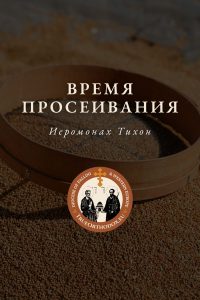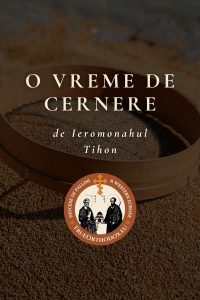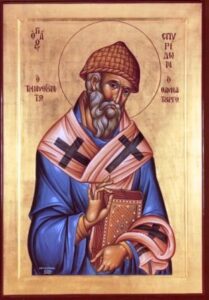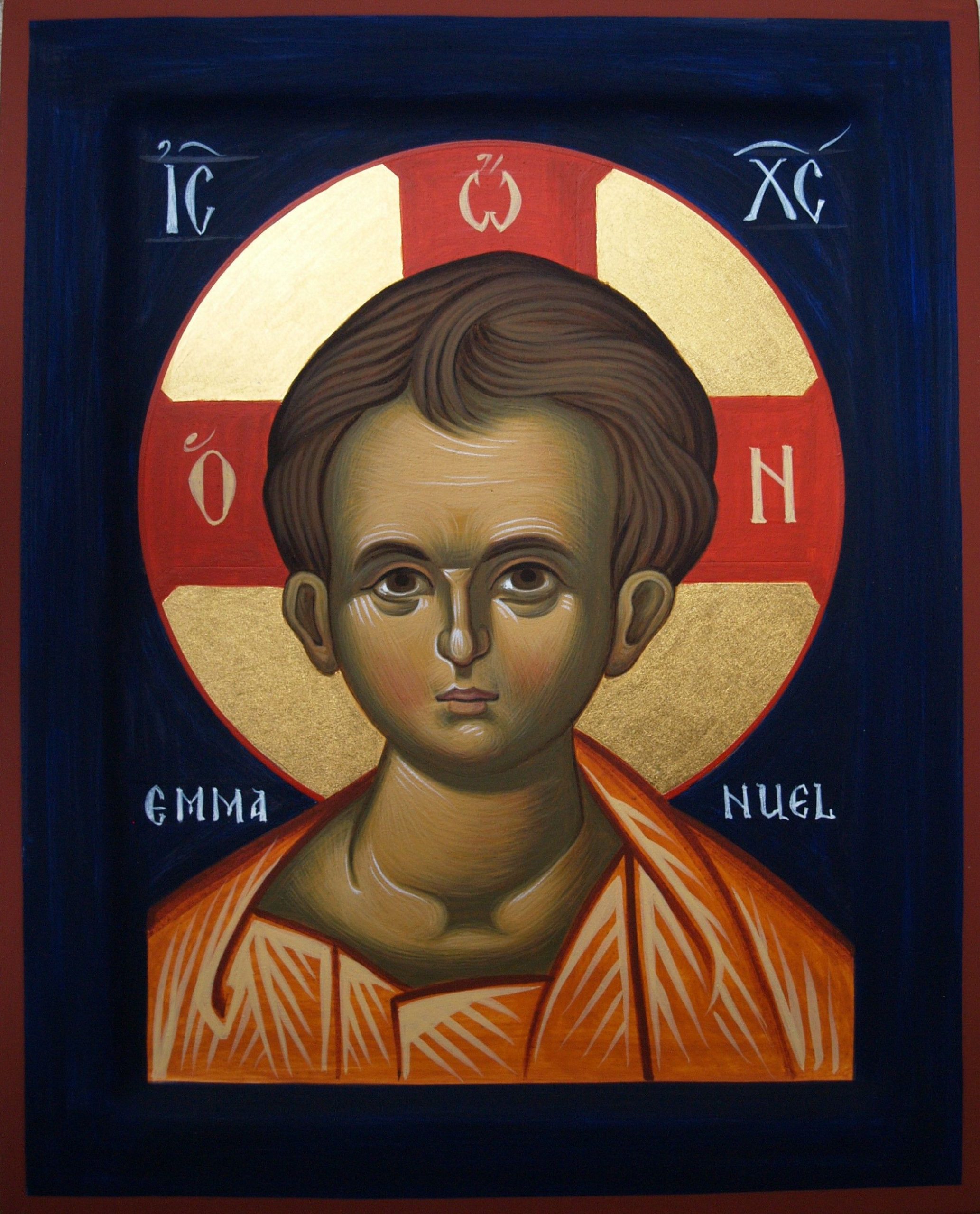HIEROCONFESSOR THEODORE (RAFANOVICH) OF KHYMY by Vladimir Moss
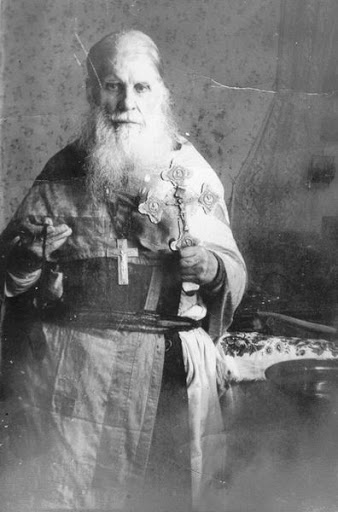
HIEROCONFESSOR THEODORE (RAFANOVICH) OF KHYMY Archimandrite Theodore, in the world Theodore Andreyevich Rafanovich, was born in Belorussia in the village of Khanichi in Mogilev region. Once as a child he wandered into the rye and came across a wolf. Thinking that it was a dog, he began to beat and shoo it away. Then some adults came up, and recognizing the “dog” to be a wolf, drove it away. His father used to sing on the cliros in the local church. And the boy was sent to study in Mogilev seminary, where he was the only non-smoker among the students. But Theodore was orphaned when quite young, and it was left to his sister, Anna Andreyevna, to care for his education. Since he was not a quick learner, she wrote to Fr. John of Kronstadt asking him to pray for him. Soon she received a reply from Fr. John: “I have prayed for your brother”. Immediately Theodore showed a dramatic improvement in his performance. On leaving the seminary, Fr. Theodore married, was ordained to the priesthood and was sent to a parish 30 miles from Gomel in the village of Sherstin. His wife was called Sophia, and they had five children – George, Nicholas, Andrew, Natalia and Zinaida. Nicholas and George perished during the war. Fr. Theodore was a very zealous priest, and many people came to his services and to seek his advice from the surrounding districts. In 1922, when renovationism began, he and his friend Fr. Paul (Levashov) were among the few priests who stood firmly for Orthodoxy, for which he was awarded a pectoral cross by Patriarch Tikhon on April 1/14, 1924. People came to him from many regions, abandoning their renovationist pastors, as a result of which he acquired a large parish. Patriarch Tikhon sent a bishop to the Gomel region in order to receive penitent renovationist clergy back into the Church. At that time many repented and returned to the Orthodox Faith. But on his return journey this bishop was arrested by the authorities and sent to a camp. Fr. Theodore was under constant observation by the authorities during this period. Once in their ignorance the servant of God Anna and her brother put their signatures to a document “on behalf of the Living Church”. When they told Fr. Theodore about this, he clutched his head and said: “What have you done! Have you got any golden coins? Take them to those who collected your signatures and ask them to blot out your signatures.” Anna and her brother did as they were told. Their signatures were blotted out. Later, Fr. Theodore was forced to leave his Sherstin parish and serve in the Chernigov district. There he was arrested and sent to the Kotlas camp. According to some sources, he was for a time in Gomel prison. When Fr. Theodore was in prison he was sentenced to be shot. The sentence was appointed for the following day. That evening Fr. Theodore was praying in his solitary underground cell. Suddenly he heard chanting beside him: “Lord, have mercy, Lord, have mercy, Lord, have mercy…” He turned round and saw a vision – a multitude of reposed souls were standing behind him with burning candles in their hands. They were chanting these words of prayer and beseeching God to deliver Fr. Theodore from death. The next morning the decree concerning Fr. Theodore’s execution was repealed. While he was in prison, Fr. Theodore refused to take some milk because it was a fasting period. The Mother of God appeared to him and said: “Servant of God, drink the milk.” After this he accepted it with gratitude and drank it. He once had another vision of the Mother of God. She was walking over the earth so weightlessly that the grass and flowers did not even sway under her feet. Once during winter in the camp he was carrying water, and the water splashed over him. His hands began to freeze, and he called on the Mother of God: “Queen of heaven, warm me!” Immediately his hands became hot, and even the water became hot. “But the people around me were freezing,” recalled Fr. Theodore. When Fr. Theodore returned from prison his wife had died. He remained alone in the rank of a protopriest. And since he had no flock, he used to wander round the marshes praying: “Mother of God, gather together my children for me.” And she brought them to him from all over Belorussia. “I gathered you all through the Mother of God,” he later said, “and I entrust you all to her.” Therefore he would grieve deeply and weep when one of them left him. In 1927 Fr. Theodore refused to recognize the declaration of Metropolitan Sergius, which placed the Church in submission to the atheists, and had to serve in house churches. The authorities searched for him, but Fr. Theodore constantly changed his domicile and escaped from his persecutors. Knowing of his loyalty to the true faith, many people came to him for spiritual support from the renovationists and sergianists. Fr. Theodore was well hidden by reliable people. New people who wanted to come to him would have to spend a great deal of time and effort to persuade those close to him to let them meet batyushka. In about 1939, Fr. Theodore was again arrested. It was winter. In the village of Strelki some people were waiting to receive communion from him. Batyushka was brought to them in a cart covered with straw. But then he was arrested and taken by train under convoy from Rogachev to Gomel. All his things were taken, and he was left only with his passport and his comb. As the train came into Saltanovka station, his guards fell asleep, and Fr. Theodore, remembering that he knew a Xenia there, quickly jumped off the train. It was snowing. Fr. Theodore lost his way, and sat down to die. Suddenly he heard some voices urging on a horse. They came up to him: “Where are you going?” they asked. “I’m going to Claudia Alexeyevna in Selevanikha – she’s my daughter-in-law,” he replied. Claudia Alexeyevna was a teacher and lived with Xenia in the house of Matushka Matveyevna. Having reached Matushka’s house, Fr. Theodore knocked on the window. The mistress of the house was aghast. He was frozen, wet and exhausted. They warmed him and gave him some fresh clothes. In the morning Stepanida ran into the hut, and, learning that Fr. Theodore was there, called Tatiana. Since a stranger, a teacher, was living in the house, Fr. Theodore had to move immediately to another place. He went with Tatiana to the village of Ugly. On their way they saw a man in a black overcoat running towards them. “That’s it! A policemen’s after us!” went through their heads. But it was a false alarm: the man, who worked on the railways, passed by them without touching them. That day was the feast of the Forty Martyrs (March 9 according to the Church calendar), and Fr. Theodore served a service to them with the master of the house John, his wife and daughter and Tatiana helping him. After this rumours circulated to the effect that Fr. Theodore had been arrested, but that he had managed to run away and was again at liberty. Those to whom he had been going for a service just before his arrest were delighted at the news. During the war, when Belorussia was occupied by the Germans, Fr. Theodore came out of the catacombs and began to serve openly. He served in the church in the village of Obidovichi in Rogachev district, and also in a church in Gorodtsy. In his sermons he angrily denounced Soviet power. “He gives such sermons about the communists,” said some Sovietized people, “that if the Russians were here they would tear him to pieces.” He would angrily denounce Soviet power, the communists and their Moscow Patriarchate. For this he was persecuted by the authorities not only as a secret priest, but also as a zealous opponent of the whole Soviet regime. When the Germans retreated, the church in Obidovichi burned to the ground. The Soviet armies arrived. By this time Fr. Theodore was no longer serving openly, but at home. He was summoned to the village soviet and warned: “If you want to serve, go to a parish, old man!” The clairvoyant Matushka Paulina from Gomel told him to hide, and he, following her advice, began to live secretly with his spiritual children in Belorussia. “At night people would come to him, but during the day – never,” remembers the servant of God T. 70 people would gather round batyushka by night. When there was a danger, noone would come. Sometimes his spiritual children would crawl up to the house on hands and knees. Some parishioners who are still alive remember the unexpected joy they had: “What joy it was going to him. It was wonderful – through the rye and the oats!” remembers Abbess M. Once Fr. Theodore was recognized by the GPU at a station. He was arrested. Then they took him through the villages under arrest, until some believers in Osipovichi ransomed him for 500 rubles. Once, when Fr. Theodore was being hunted by the GPU, the president of the local soviet, who was a Jew, came to the hut where he was living. At that moment Fr. Theodore was praying with his prayer-rope. The man asked him who he was. Fr. Theodore said that he was a wanderer – they did not touch him. In 1946 some people from the KGB went to the elder Peter Razumovsky (who by many accounts was a secret bishop) and began to demand that he reveal to them where Fr. Theodorer was living. The elder only replied: “I don’t know where he is, but I will tell you one thing: the Holy Spirit is upon him! Fear him – he will strike you!” Fr. Theodore was clairvoyant. If a person came to him with an offering but was secretly begrudging it, Fr. Theodore would be able to read his thoughts and would meet him with the words: “To give or not to give?” From others, however, he would accept offerings with gratitude. Once Fr. Theodore was serving the Liturgy in an wooden cabin. After the service, he refused the food that was offered him, sat down and began to weep like a child. “Take me away from here – out of this farmstead,” he repeated insistently. Now there was some rye growing on this farmstead. They took him there, and immediately after the police descended upon the house. They were looking for Fr. Theodore and turned the whole house upside down, sticking their rifle butts into everthing possible. By that time Fr. Theodore had managed to go from the farmstead rye into the collective farm rye, which began just at that point, and to hide there. It was in about 1956-57, at the feast of the Protecting Veil in October. A KGB agent came to the house of Fr. Theodore’s reader at just the time that Fr. Theodore was in the house. The reader did not let the KGB agent beyond the door of her house, and he, after looking round on both sides, went away. In this village there worked another KGB agent, and the first agent, going to him, said that in the house of the reader there was a priest whom they were just about to arrest. This second agent had a believing mother who also went to Fr. Theodore. Her son warned her that she should not go to the house where the secret priest was serving – otherwise they would arrest her, too. She passed what she had heard on to her daughter-in-law, who ran and told everything to another woman from Fr. Theodore’s flock. “Don’t worry – there’s noone there”, said this woman soothingly. But immediately the first woman had gone she ran to Fr. Theodore and warned him. At that moment Fr. Theodore was doing the proskomedia, and the house was full of people who had assembled for the feast of the Protecting Veil. On hearing about the coming raid, the people became very anxious. Fr. Theodore turned to them and said: “Don’t go anywhere! Everyone make 36 signs of the cross on the doors and all round.” All the adults and children carried out this obedience fervently with their prayer-ropes. “Let noone leave the Liturgy!” warned Fr. Theodore again. And the master of the house added: “May the power and will of God be done!” Everyone stood up to pray and the service began. They prayed very fervently, expecting that they would be arrested the next day. Everyone wept as they read the akathist to the Mother of God. Fr. Theodore calmed them all and said in his sermon: “If God does not wish it, they can do nothing to us. Then even if hell were let loose, the Lord would not allow it!” That is what happened this time – the service ended and everyone dispersed without trouble to their homes. One of the places where Fr. Theodore lived was the village of Khymy. People would come to him there from distant places, passing points in which there were the houses of his parishioners. A kind of “post office” operated in these houses, and in them people could learn about any danger that was threatening. The village of Khymy consisted of three parallel streets, on the last of which lived Fr. Theodore. The neighbours knew that in this house there lived a priest. 60-70 used to come to Fr. Theodore at this time. So as to be next to their batyushka, the members of his flock would sometimes organize their work on the spot. So the future Metropolitan E. pastured cows there for three years, while Abbess M. lived in Khymy for three months, having got work there preparing peat. She had to go to work in the morning, and for her sake Fr. Theodore began the service at 4 in the morning. Usually he began the service at 5 or 6 o’clock and served until 5 or 6 in the evening. Confessions would take a long time with him. He usually served alone, in a white podryasnik. A woman who belonged to Fr. Theodore’s flock worked in the nearby Beletsky peat factory. She learned in the factory that a raid on Fr. Theodore was being planned, and soon a message went out through the “post office” that people should not go to Fr. Theodore any more. They say that at this time some people were returning from Fr. Theodore carrying holy water and prosphoras. On the road they noticed a parked “Kozlik” car. It was dark, and the car followed them keeping them always in its headlights. Realizing that they were being followed, the Christians waited until they came to some thickets. Then they turned sharply off the road and managed to hide. Another woman in Fr. Theodore’s flock got to know a secret detective who was pretending to be a believer. In her ignorance she gave him all the addresses where Fr. Theodore usually served. Soon the KGB summoned her and gave her an exact account of her conversation with the detective “Christian”. The police went to all the addresses on the list. They did not find Fr. Theodore because the woman had not told the detective about the house in Khymy, where Fr. Theodore happened to be at that moment. The police would take three houses of Fr. Theodore’s parishioners and search them from top to bottom. But he was not there – he had managed to hide. Once the police came to a house where he was staying, and he again managed to hide. However, the mistress of the house, Pimenikha, was so frightened that she died from fear. It was particularly difficult for people to gather at Fr. Theodore’s houses when Khrushchev came to power. In the course of 20 years Fr. Theodore managed to gather a flock of about 1000 people. People would come to him from Mogilev, Minsk and Bryansk districts. In the course of 20 years Fr. Theodore managed to gather a flock of about 1000 people. People would come to him from Mogilev, Minsk and Bryansk districts. Fr. Theodore was a strict priest, but at the same time he was very attentive and loving. For example, there is the following incident from the childhood of Metropolitan E. He was tending the cows, and fell ill. It was a fasting period. Fr. Theodore came to him and said: “Eat fish.” E. began to refuse: “How can I eat fish during a fast? I won’t!” “You’re ill, eat fish,” insisted batyushka. The sick boy stubbornly refused. But Fr. Theodore did not go away until he had fed him. One woman told him that she had such-and-such a job and lived in such-and-such conditions, which made it impossible for her to eat only fasting food during the fast, however much she wanted to. “Well, what can you do, eat what you’re eating, that’s the kind of work you have,” replied Fr. Theodore. Fr. Theodore was against his spiritual children going to the collective farms, which he could not stand. His parishioners asked him how they were to behave when they found themselves beside ruined churches or churches in which the Moscow Patriarchate served. He said that in such cases the church buildings had once served Orthodoxy, and should be treated with respect. On going up to one such church, they should stop, look up to heaven and say: “O Lord, Thy grace has departed to the heavens.” After this they should cross themselves and stand for a little. Fr. Theodore strictly forbade his spiritual children to go the churches of the Moscow Patriarchate, and that it was not right even to socialize with those who went to those churches. He would be particularly strict about this with those who were somewhat negligent in this respect. He said that one could go into the churches of the Moscow Patriarchate only for one reason – to venerate the holy things – the wonderworking icons, the holy relics and the cross. Relics and the cross, he said, retain their grace-filled power until the end of the world. “In the Soviet churches they won’t baptize your children, they’ll ‘red-star-ize’ them,” he said. (This is a play on words in Russian: “Nye okrestyat, a ozvyezdyat”.) He strictly forbade people to baptize or be married in the churches of the Moscow Patriarchate, and gave a penance to anybody who ignored this command. This is what he told his spiritual children: “If you go into a church of the Moscow Patriarchate and you decide to stand a little and see how their service goes, remember that you are not allowed to pray even one prayer with them. So don’t get carried away by their chanting in case you begin to pray with them. Let’s say they are singing ‘Holy God’, and then they cross themselves. Don’t cross yourselves at the same time, but wait until they’ve done it, then you can cross yourselves.” As a rule, the “Theodorites” went into the churches of the patriarchate only in order to venerate the holy things before or after the service. Fr. Theodore used to tell his spiritual children the following: “The communists have been hurled at the Church like a crazy dog. Their Soviet emblem – the hammer and sickle – corresponds to their mission. With the hammer they beat people over the head, and with the sickle they mow down the churches. But then the Masons will remove the communists and take control of Russia. Priests will come from the West who will both go to hell themselves and will drag you down with them.” Fr. Theodore would carry with him everything he needed for serving. He had only one great need – a bishop. Fr. Theodore was very sad because he could not find a true bishop of the Catacomb Church. However, some of his spiritual children who lived in the south of Russia informed him that in their region there lived a Catacomb bishop, Anthony (Galynsky-Mikhailovsky), who had just been freed from prison. In 1956 or a little later, Archbishop Anthony was planning to visit Kiev, and he invited Fr. Theodore to visit him. It was a touching meeting, and Fr. Theodore, recognizing a true hierarch, placed himself under his omophorion. “He is not an earthly man,” he said. “Although I am sick and weak I stood through the whole service” When Fr. Theodore was living in Khymy, someone betrayed his whereabouts and the authorities burst it looking for him. However, the local president helped him – although he knew that Fr. Theodore was there, he told the searchers: “He hasn’t lived with us for a long time.” This averted the danger for a certain time, but the person who really saved Fr. Theodore then was a a certain Alexander who put Fr. Theodore onto his motorcycle and drove him to his home in Gomel. So Fr. Theodore settled secretly in Gomel with Alexander and his wife Anfisa. Their home was just opposite the police-station! Some time later, however, Alexander died through electrocution and Fr. Theodore left his flat and returned to Khymy. Fr. Theodore performed Alexander’s funeral service in the following fashion. The coffin with the body lay on the first floor of the house, while he read the service standing on the second floor.. On the ninth day after Alexander’s repose a fiery pillar was seen over his grave. As a result Fr. Theodore asked to be buried in the cemetery next to him. In the town of Svetlogorsk there lives Fr. Theodore’s daughter, Natalya. During his life the police often visited her, looking for him. They tried to force her by threats and violence to reveal the whereabouts of her father. When she refused they beat her and even threatened to rape her. Her husband ran away since they threatened him with shooting for hiding Fr. Theodore. Once when two policemen were searching the house, a miracle took place. Before they arrived Natalya succeeded in lying down stock-still on a trunk. But the Lord turned away their eyes so that they did not see her. One of them even began to lift the lid of the trunk, but, without noticing her, said: “How heavy this is!” The other policeman told him to leave the trunk in peace. So they left without seeing or touching her. Abbess M. says that in the last four years of his life Fr. Theodore was doing very poorly. He could hardly move and his mind became somewhat clouded and a childlike quality began to appear in him. All the same he continued to serve and feed the people, helped by a novice nun. Fr. Fyodor died in the village of Khymy on Palm Sunday, the day of the Vilnius martyrs – April 14, 1975 according to the Church calendar. This coincided with Radonitsa that year. When he died his daugher and her husband came to hieromonk E. at three o’clock in the morning and handed him a letter from Archbishop Anthony with the command to perform the funeral service for Fr. Theodore. E. sat in the car with them and on arriving carried out the funeral service. (Archbishop Anthony had been informed that Fr. Theodore was dying by a nun who came to tell him.) Metropolitan E. says that Archbishop Anthony had ordered that Fr. Theodore be buried in the cemetery. But when he died, the lady of the house in which he was living secretly was frightened to bury him in a cemetery, fearing that through this the authorities would find out that a catacomb priest had been hiding with her. She insisted that Fr. Theodore be buried next to her house. Fr. Theodore’s daughter agreed with this. And so he was buried at night under the wall of her house, wearing the golden cross which his Holiness Patriarch Tikhon had given him during the years of struggle with renovationism. The owners of this house were also frightened about the sacred vessels in which Fr. Theodore had served, as well as his other things. So some time later Nun A. came and handed them over to Hieromonk E. Perhaps because of this disobedience with regard to Archbishop Anthony’s command, this house burned down at the beginning of the 1980s, and Fr. Theodore’s coffin was covered with logs. In the second week of Pascha, 1992, members of Fr. Theodore’s flock who had recently left the Catacomb Church and joined the Russian Church Abroad prepared a place in a cemetery for his burial, together with everything that was necessary, and with the participation of his daughter, grandsons and spiritual children, Fr. Theodore’s remains were transferred there. After Fr. Theodore’s death several members of his flock went to no other person for spiritual sustenance. They had the impression that Fr. Theodore was the only true pastor. (Sources: Pravoslavnaya Rus’, no. 21 (1474), November 1/14, 1992, pp. 8-9; Priest B., from the reminiscences of Metropolitan E., Abbess M., Deaconess A., Schema-nun M., Nun T., servant of God M., servant of God T., servant of God A., V. Leonichev; M.E. Gubonin, Akty Svyatejshago Patriarkha Tikhona, Moscow: St. Tikhon’s Theological Institute, 1994, p. 315)


